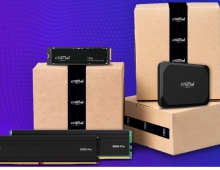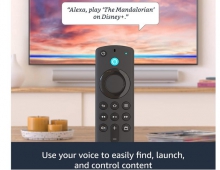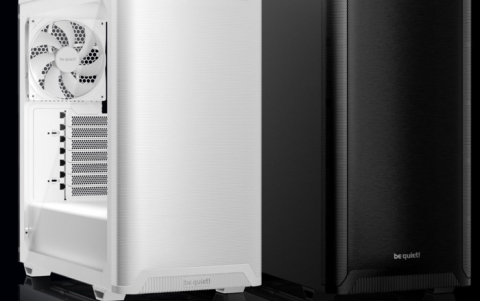
Amazon Unveils Image Recognition, Voice-Activated AI Services
Amazon Lex, Amazon Polly and Amazon Rekognition are Amazon.com's new cloud computing products designed for image recognition, speech-to-text conversion and conversational apps, respectively.
Andy Jassy, chief executive officer of the Amazon Web Services unit, introduced the new cloud computing products Wednesday at the company's fifth annual re:Invent conference that kicked off in Las Vegas.
Amazon AI services is making AI broadly accessible to all app developers by offering Amazon's deep learning algorithms and technologies as fully managed services that any developer can access through an API call or a few clicks in the AWS Management Console.
Amazon Lex is a new service for building conversational interfaces using voice and text that is built on the same automatic speech recognition (ASR) technology and natural language understanding (NLU) that powers Amazon Alexa. Amazon Lex makes it easy to bring natural language capabilities to virtually any app. Developers can build and test bots (conversational apps that perform automated tasks like checking the weather or booking flights) directly from the AWS Management Console by typing in a few sample phrases (e.g., "find a flight," or "book a flight") along with instructions for getting the required parameters to complete task (e.g., travel date and destination) and the corresponding clarifying questions to ask the user (e.g., "when do you want to travel?"). Amazon Lex takes care of the rest, building the language model and asking the follow-up questions needed to complete the task. Because Amazon Lex is integrated with AWS Lambda, developers can configure Amazon Lex to invoke the appropriate backend service (e.g., the flight booking service) through an AWS Lambda function. Developers can also use pre-built enterprise connectors that execute AWS Lambda functions to answer questions like "what are my top 10 accounts in Salesforce.com," by fetching data from enterprise systems like Salesforce, Microsoft Dynamics, Marketo, Zendesk, QuickBooks and HubSpot.
Bots built using Amazon Lex can be used anywhere: from web applications, to chat and messenger apps like Slack and Facebook Messenger, or through voice in apps on mobile or connected devices. Amazon Lex handles the authentication required by different platforms and simplifies the user interface design by not requiring developers to write custom code for each platform. Moreover, developers pay only for the calls made to the Amazon Lex API.
Amazon Polly makes it easy for developers to add natural-sounding speech capabilities to existing applications like newsreaders and e-learning platforms, or create new categories of speech-enabled products - from mobile apps to devices and appliances. Amazon Polly is easy to use; developers can send text to Amazon Polly using the SDK or from within the AWS Management Console and Polly immediately returns an audio stream that can be played directly or stored in a standard audio file format. With 47 lifelike voices and support for 24 languages, developers can choose from both male and female voices with a variety of accents to make applications for users around the globe. And Amazon Polly?s fluid pronunciation of text content means applications deliver high-quality voice output across a wide variety of text formats. With Amazon Polly, developers pay only for the text they convert, and they can cache generated speech and replay it as many times as they like with no restrictions.
Amazon Rekognition enables developers to build applications that analyze images, and recognize faces, objects, and scenes. Amazon Rekognition uses deep learning technologies to automatically identify objects and scenes, such as vehicles, pets, or furniture, and provides a confidence score that lets developers tag images so that application users can search for specific images using key words. Amazon Rekognition can locate faces within images and detect attributes, such as whether or not the face is smiling or the eyes are open. Amazon Rekognition also supports advanced facial analysis functionalities such as face comparison and facial search. Using Rekognition, developers can build an application that measures the likelihood that faces in two images are of the same person, thereby being able to verify a user against a reference photo in near real-time. Similarly, developers can create collections of millions of faces (detected in images) and can search for a face similar to their reference image in the collection. There are no upfront costs for Amazon Rekognition, developers pay only for the images they analyze and the facial feature vectors they store.
Amazon Polly is available today in US East (N. Virginia), US East (Ohio), US West (Oregon), and EU (Dublin) Regions, and will expand to additional Regions in the coming months. Amazon Rekognition is available in US East (N. Virginia), US West (Oregon), and EU (Dublin) Regions, and will expand to additional Regions in the coming months.
In addition to these services, AWS recently announced it is investing significantly in MXNet, an open source distributed deep learning framework, initially developed by Carnegie Mellon University and other top universities, by contributing code and improving the developer experience. MXNet will enable machine learning scientists to build scalable deep learning models that can reduce the training time for their applications.
AWS also makes it easy for developers to run their own deep learning and machine learning workloads to build their own AI platform on top of AWS. Amazon Elastic Compute Cloud (Amazon EC2), with its set of instance types and GPUs with large amounts of memory, is ideal for deep learning training. P2 instances, launched in September 2016, were designed for large-scale machine learning and deep learning with up to 8 NVIDIA Tesla K80 Accelerators, each running a pair of NVIDIDA GK210 GPUs that have 12 GiB of memory and 2,496 parallel processing cores.
Amazon is trying to maintain its lead over Microsoft, Alphabet's Google and IBM as more companies transition from using their servers to renting computing power and data space hosted remotely, which they access via the internet.
Amazon's Web Services division is the Seattle-based company's fastest-growing and most profitable source of revenue, offsetting regular quarterly losses from its e-commerce operation.





















